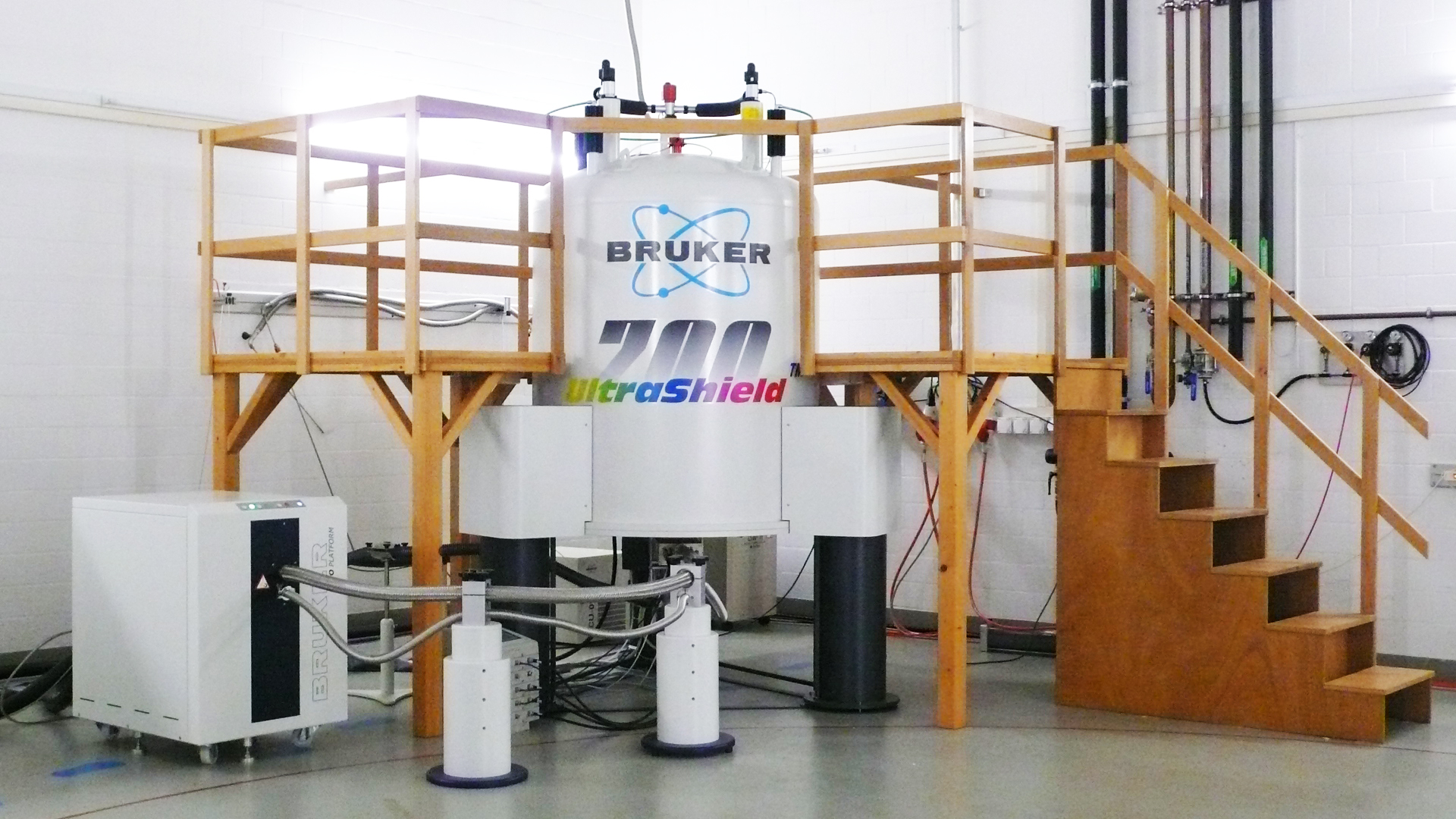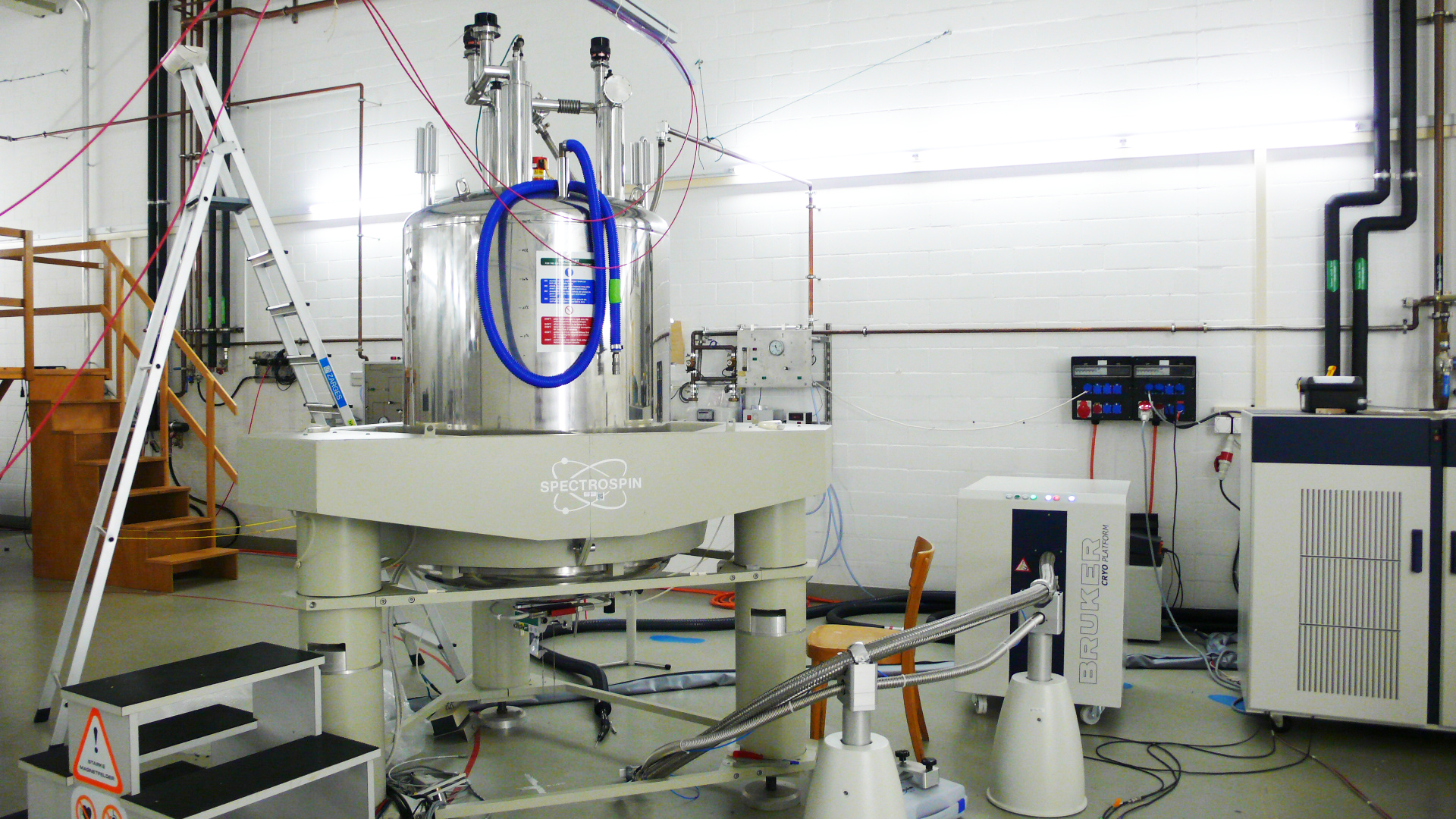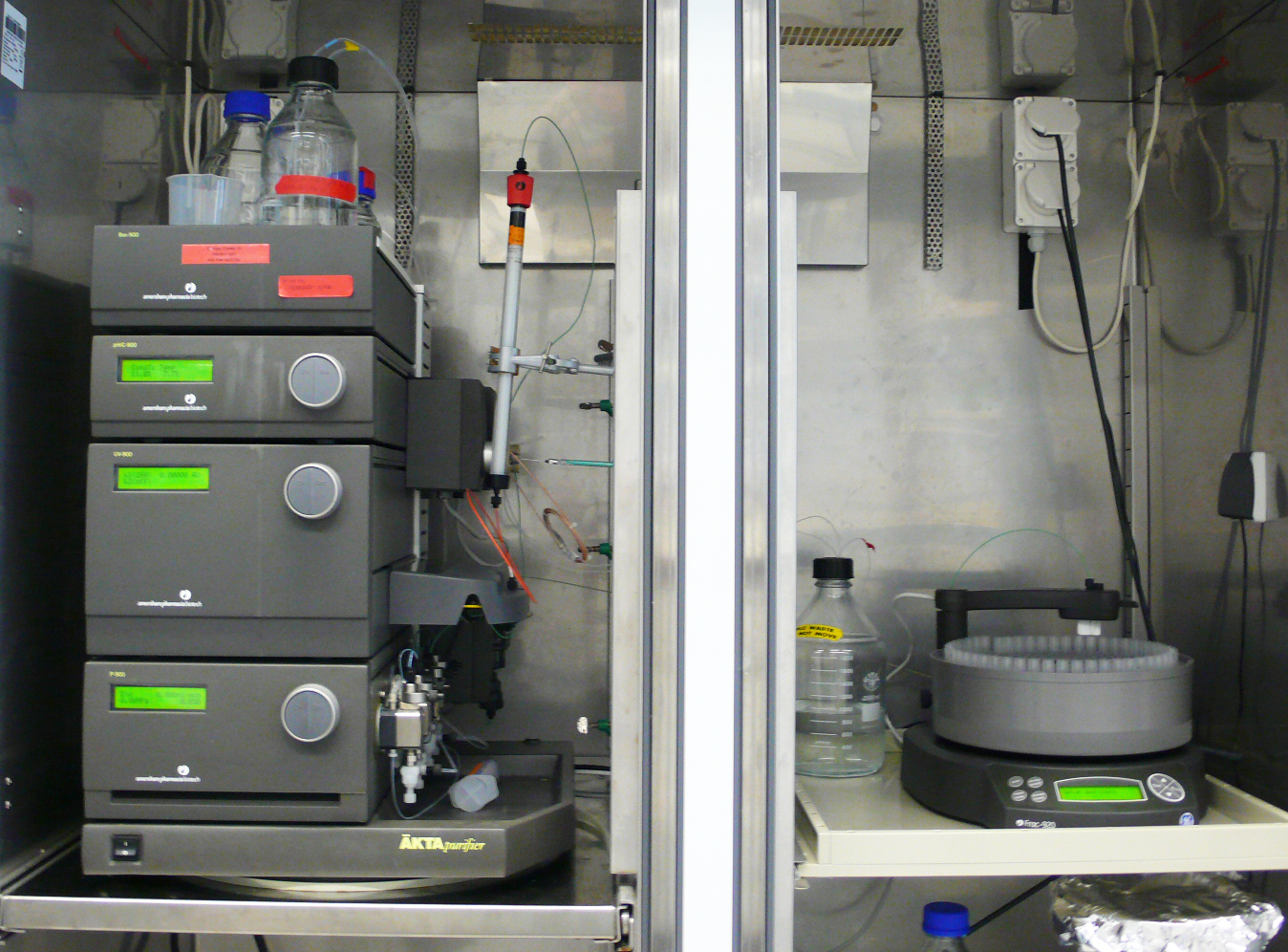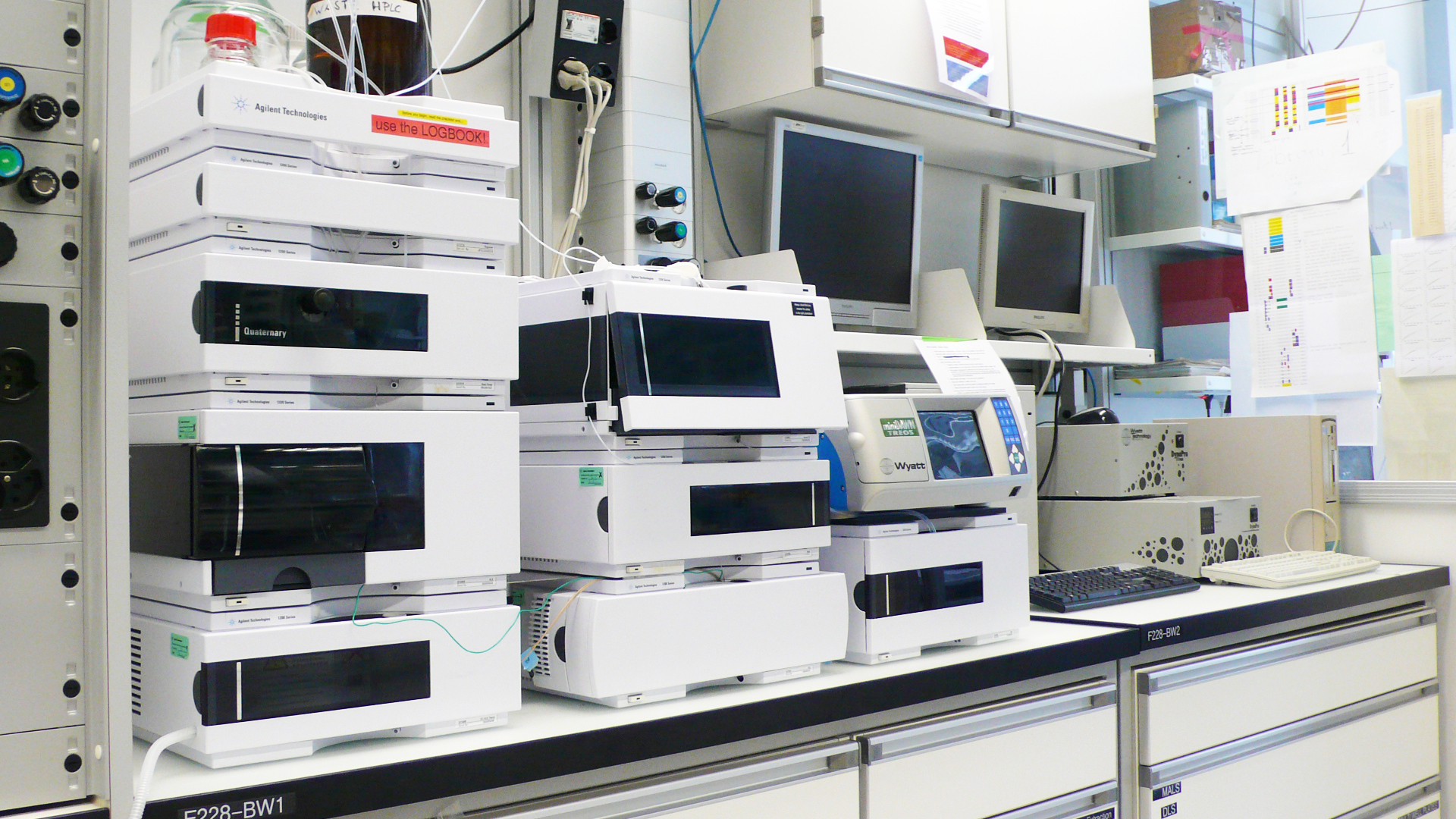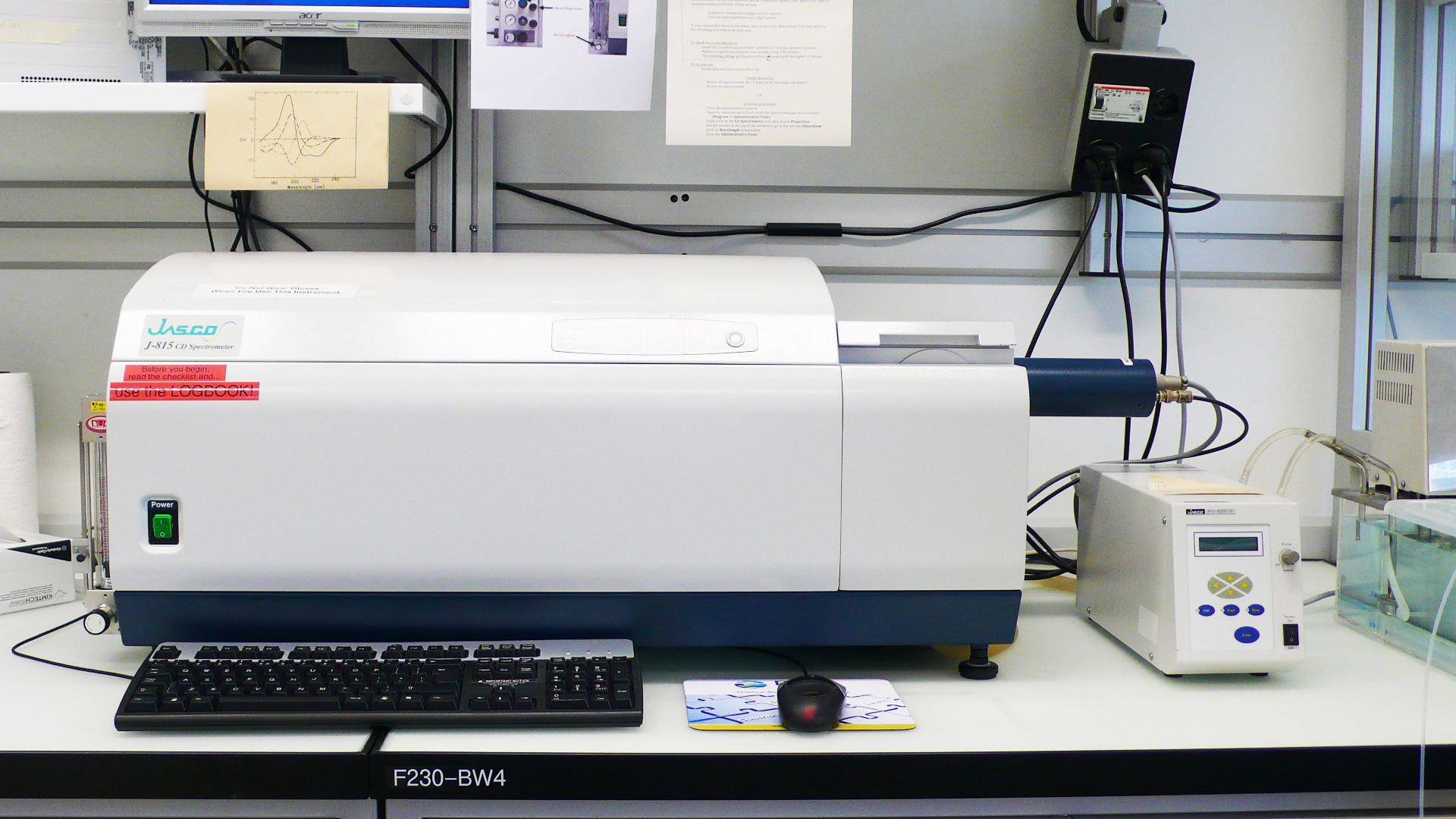Facilities
The Bio-NMR laboratory is well equipped to determine atomic resolution structures and to investigate dynamic features and intermolecular interactions of biological macromolecules. We have two major NMR spectrometers devoted to the task.
Additional probeheads for this spectrometer are available:
- Triple resonance {1H,13C,15N} TXI 600 CryoProbe
- Dual resonance {13C,1H} DUL 600 CryoProbe
- Room temperature triple resonance {1H,13C,15N} TXI 600 probehead
- Room temperature broadband {X,1H} BBO 600 probehead for heteronuclear NMR
The spectrometer is synchronized with a laser, which is triggered from an NMR pulse sequence and fires continuous or pulsed laser light of different wavelength. This is allowing for example to perform chemically induced dynamic nuclear polarization experiments which are using radicals to significantly enhance signals from solvent exposed aromatic protein residues.
Besides typical experiments in structural biology this system, in combination with MIC 600 probehead and additional high-current gradient unit, can also be used for MRI micro-imaging of living cells.
One of the primary objective of the Bio-NMR laboratory research is to understand the conformational switches of proteins associated with amyloid diseases and trans-membrane signaling and the lab is well equipped to study biophysical properties of the protein aggregation. A dynamic light scattering instrument (Wyatt) can quickly estimate the size distribution of protein aggregates.
The instrument measures the time-dependent fluctuations in the scattered light which are then used to calculate diffusion properties of the molecule in the solvent, and the particles' hydrodynamic radii.
The static light scattering instrument (Wyatt) measures the angular dependence of the amount of light scattered from the sample and in combination with HPLC (Agilan) and refracting index detector (?) can reveal masses of the oligomers as well as masses of protein/lipid complexes

